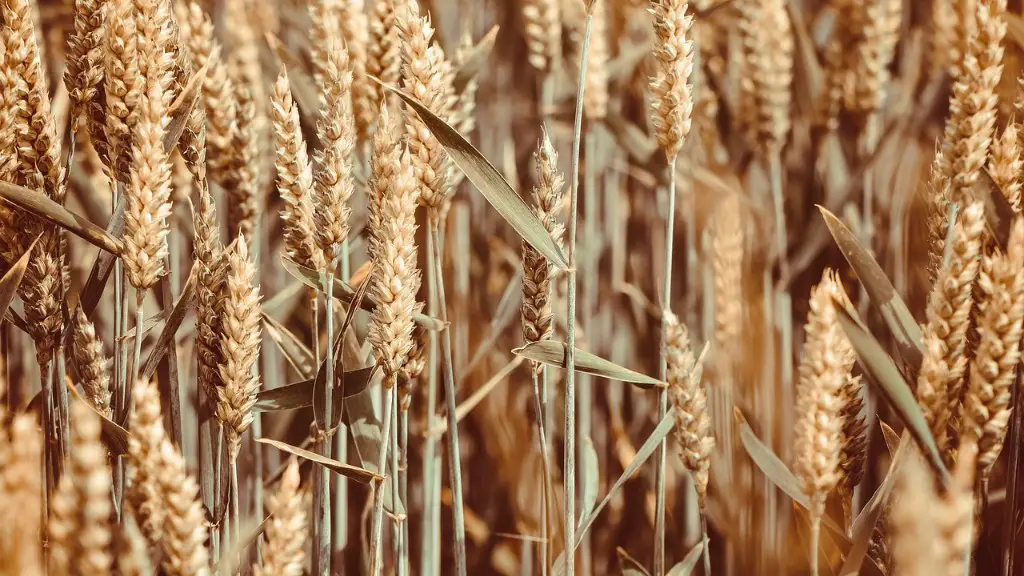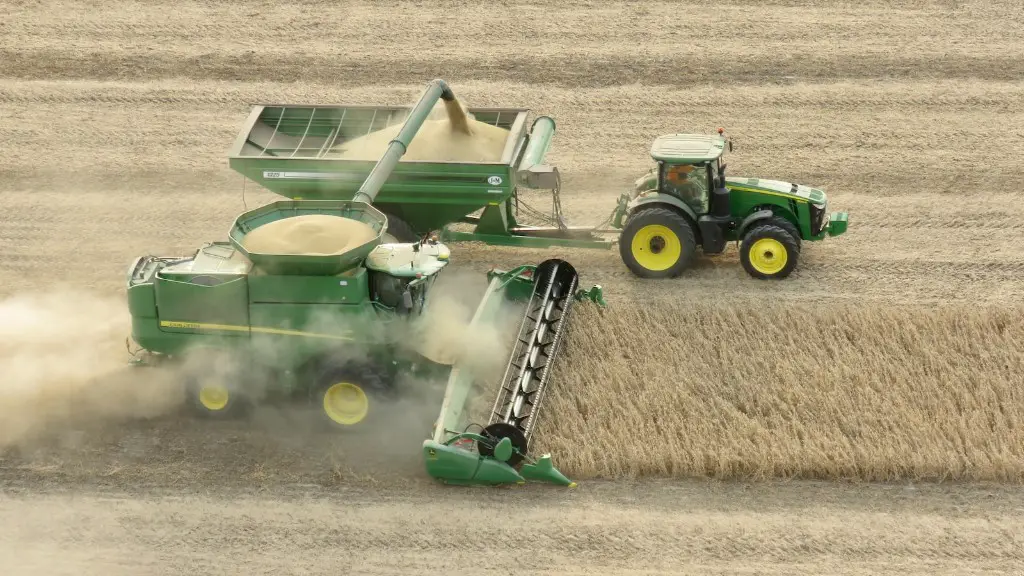Diffusion in agriculture can be defined as the establishment of an agricultural practice or product that spreads from one region to another. It involves the displacement of existing methods, ideas and ways of operating. This process may take place both horizontally (with its geographical spread) and vertically (with its relative intensification). Diffusion of agriculture is a key factor in the evolution of agrarian systems and the development of agricultural productivity over time.
The spread of agricultural practices within a given region is typically driven by economic or social factors. Consumer tastes and preferences influence farmers to adopt innovative technologies and practices. Likewise, climate change, resource availability and labor shortages can affect the demand for certain commodities, impacting the diffusion of particular products or strategies. Additionally, the introduction of new products and technologies due to other regions’ agricultural successes can also provide a source of inspiration for farmers.
Diffusion in agriculture requires that a certain level of infrastructure and investment be available in the target location. Providing access to markets and enabling access to agricultural inputs, such as seed, fertilizer, and other resources, is a vital aspect of agricultural diffusion. This is particularly important in regions characterized by a weak or absent market infrastructure. Diffusion can also be fostered through the use of educational initiatives, such as extension services and farmer cooperatives, which guide the introduction of new products and practices to the area in question.
In some cases, diffusion in agriculture is driven by acts of large-scale migration. As new migrants settle in a given location, they bring with them their own sets of agricultural practices, as well as new ideas for how to approach production and management. Additionally, these newcomers may also bring with them valuable resources that may spur the growth of a region, such as new varieties of crops, new livestock breeds, or new agricultural technologies.
The influence of these migrations on a region’s ecology and culture can be profound, at times completely reshaping the landscape and its associated doings. The transfer of new practices, paired with the influx of resources and new labor forces that are often associated with this process, can profoundly influence the growth of a region’s agricultural sector.
Expansion on Diffusion in Agriculture
Diffusion in agriculture is an important process in the development of sustainable, productive and resilient agrarian systems. By promoting the spread of agricultural knowledge and technology, agricultural diffusion enables new practices to be adopted and adapted to local contexts. This in turn enables farmers to become more productive and achieve higher returns in their production activities.
Through diffusion, farmers gain access to new technologies and products, as well as current knowledge pertaining to the production of commodities. This can assist farmers in improving their yields and the quality of their harvest, allowing them to meet evolving consumer demands. In some cases, this can lead to increased profits for farmers, enabling them to reinvest in their operations and secure economic and environmental Stability.
Diffusion of agriculture can also provide a source of knowledge exchange and global learning. Farmers in different regions can share experiences and approaches for engaging with developments in the agricultural sector. By sharing ideas and advice, farmers are able to more effectively incorporate best practices into their own operations, creating a more comprehensive understanding among farmers across the world.
Moreover, diffusion in agriculture can also lead to improved agricultural standards. Through the spread of new technologies, techniques and approaches, farmers are able to adopt more efficient and sustainable practices, improving their environmental and social profiles. This in turn can help to foster a more agreeable, equitable and healthier agricultural system that benefits both the producers and consumers of agricultural commodities.
Finally, agricultural diffusion can also serve to promote regional economic growth. As new products and technologies emerge, farmers are able to access higher market revenue by selling these items. At the same time, widespread diffusion of strategies and approaches for engaging with agricultural production can spur the development of agricultural talent and expand the global pool of expertise. The combination of increased market revenue, improved standards and access to new resources can therefore lead to overall economic development in the region.
Factors of Diffusion in Agriculture
The diffusion of agriculture is determined by a combination of social and economic factors. Consumer preferences and varying tastes in different markets can inspire farmers to adopt new technologies and approaches. Similarly, changes in climate and other environmental conditions can stimulate the spread of particular agricultural commodities. In some cases, the availability of new resources can also drive the diffusion of agricultural products and strategies in a certain area.
At the same time, market infrastructure is also an important factor in the spread of agriculture. Without access to affordable inputs and wider markets, farmers may be unable to pursue new production activities or take part in exchanges. Likewise, education plays a key role in the diffusion of agriculture, as farmers need to be aware of new technologies, methods, practices and resources before they can effectively utilize them.
Moreover, large-scale migration can also influence agricultural diffusion. Through migration, farmers are exposed to new practices and products which may not be available in their own region. As these migrants relocate, they can introduce these items to their new homes, contributing to the diffusion of knowledge and resources in an area.
Diffusion in agriculture can also be affected by individual and state actors. Governments can affect the spread of technologies and products by either promoting or restricting access to certain markets and resources. Similarly, individual actors can impact the diffusion of techniques and strategies, as they can serve as both advocates and detractors.
The combination of these factors can give rise to both spatial and temporal dynamics in the diffusion of agriculture, with new innovations and resources spreading slowly but steadily around the world over time.
Obstacles of Diffusion in Agriculture
The diffusion of agriculture is not without its obstacles. In some instances, agricultural actors may be unwilling to accept new approaches due to existing cultural norms, or they may lack the know-how or resources to incorporate these techniques. Additionally, an inadequate market infrastructure can prevent farmers from accessing needed resources or selling their produce in larger markets.
Furthermore, some governments may restrict access to certain technologies or resources out of fears of competition or risk aversion. Some technologies can be expensive or difficult to access due to license restrictions, patents, or a lack of funding. Similarly, the lack of financial resources or educational opportunities may prevent diffusion in agriculture, especially in developing countries.
Finally, the private sector can also play a role in limiting agricultural diffusion. Companies may see the diffusion of particular products or technologies as a threat to their bottom line, and thus work to prevent the spread of these items in certain regions. By creating monopolies or engaging in acts of competition, companies can limit the diffusion of certain agricultural innovations.
Benefits of Diffusion in Agriculture
Despite the obstacles to diffusion in agriculture, the process of transferring new products and technologies can offer significant benefits, both locally and globally. On one hand, the spread of agriculture can lead to improved production practices and productivity, providing a source of economic stability for individual farmers. At the same time, wider diffusion of knowledge can help to expand the agricultural workforce, fostering collaboration, innovation and growth.
At the global level, the diffusion of agriculture can help to create a more resilient and equitable food system. Sustainable farming practices can spread, leading to improved agro-ecosystems and reduced environmental pressures. At the same time, the increased availability of resources and knowledge can help to reduce inequality and improve the livelihoods of farmers in the global south.
Finally, the diffusion of agriculture can help to foster global understanding and cooperation between different nations. As farmers in different locations have the opportunity to interact and exchange ideas, new international relationships are formed. Ultimately, these connections can help to create a more peaceful and prosperous global community, one in which all stakeholders benefit from the spread of new resources and technologies.
Impact of Diffusion in Agriculture
The impacts of agricultural diffusion can be profound in terms of shaping the landscape, culture and production of a given region. Through the introduction of new technologies and techniques, agrarian systems can be reoriented and productivity can be improved.
At the same time, the spread of agriculture can have wide-ranging ecological impacts. By deconstructing and reorganizing existing practices, farmers and producers in a given location can draw down their environmental footprint and build a more sustainable, sustainable agro-ecosystem.
The economic benefits of agricultural diffusion can also be noteworthy, as new technologies and products can help to raise incomes and expand employment opportunities in an area. Additionally, new economic relationships can be formed with other parts of the world, aiding in the growth and prosperity of the entire region.
Ultimately, the diffusion of agriculture is essential for the growth and development of rural communities in an ever-changing global environment. As new technologies, products, and strategies spread around the world, so can the benefits. With appropriate infrastructure, education and access to resources, diffusion in agriculture can have beneficial outcomes for all.

